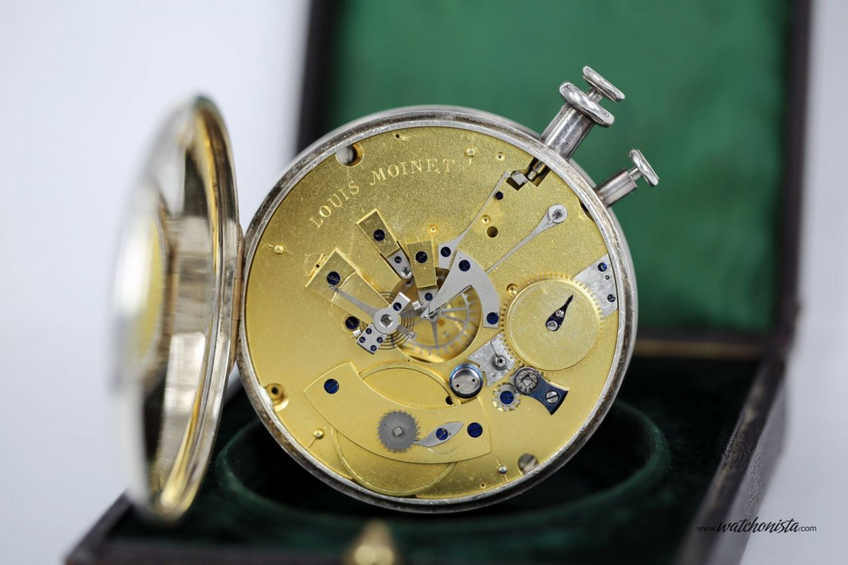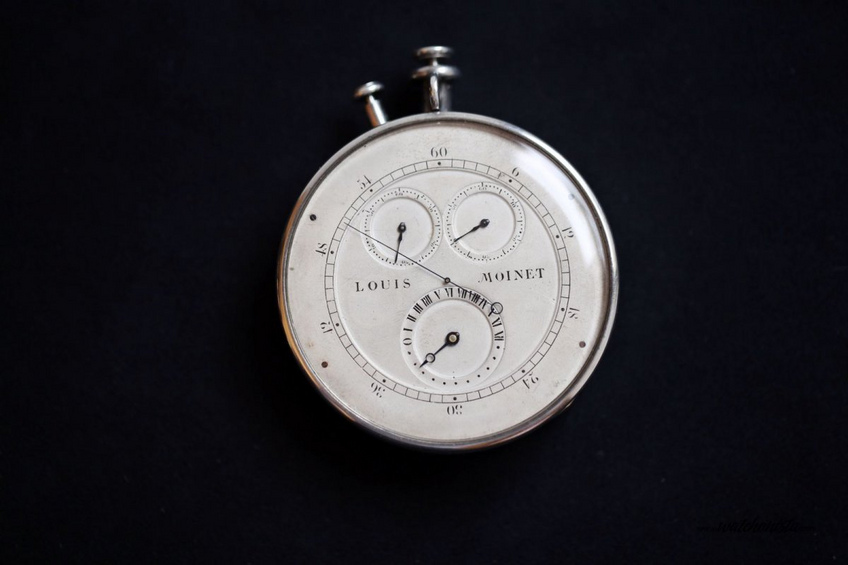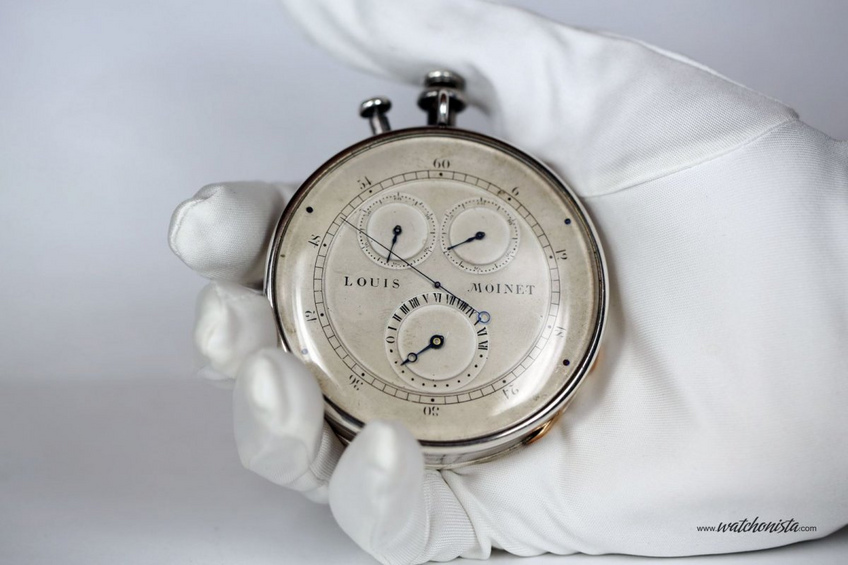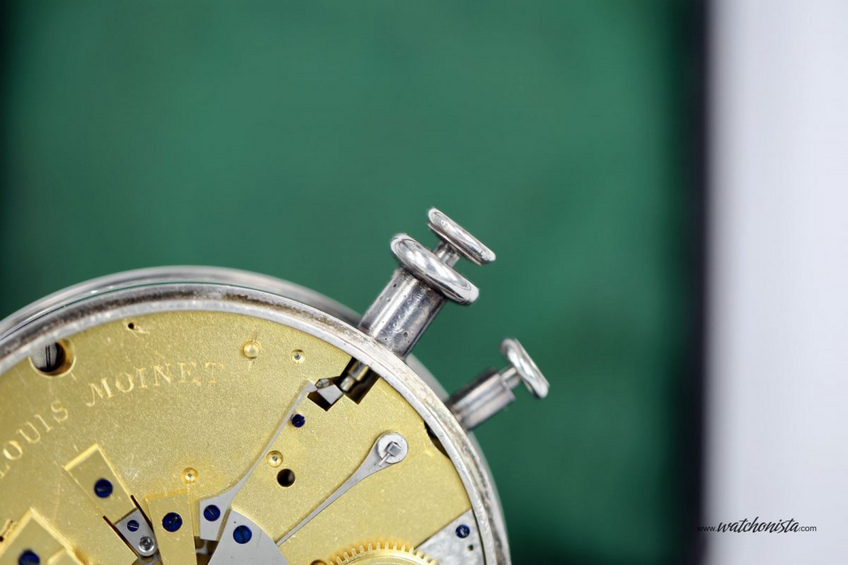

Louis Moinet or the first chronograph's history revisited
The piece historians today consider the first chronograph was actually called the compteur de tierces, or thirds counter, from an old term for one-sixtieth of a second. The day following its discovery, Wikipedia already corrected its copy on the chronograph.
History moves in strange ways. All it takes is one discovery to dispel certainties. The revelations made on March 21, 2013, at the Observatoire in Neuchâtel dismantled the story of the first chronograph. Jean-Marie Schaller, the brand's CEO, offered historical proof and expertises to support the notion that Louis Moinet was, in fact, the real inventor of the chronograph. This technically and aesthetically outstanding horological piece was signed by him and dated 1816, and that sent a shockwave through the entire industry. In fact, the day after, Wikipedia changed its definition: The first modern chronograph was invented by Louis Moinet in 1816, solely for working with astronomical equipment. It was Nicolas Mathieu Rieussec who developed the first marketed chronograph at the behest of King Louis XVIII in 1821.

A big discovery
Rieussec's invention from 1822 was a curious instrument with a mechanism that deposited drops of ink on an enamel dial to mark time. It was practical for all those who enjoyed watching horseracing, and because of the way it was configured, it was called a chronograph, chronos for time and graph for writing: the time-writer. The term nowadays refers to a timepiece, including any wristwatch, with a complication allowing the user to measure intervals of time.
Other subtle devices enhanced this particular discovery, like a zero-reset system using a second pusher, or the temporary stopping of the timer, which requires a mechanical memory that allows the chrono hand to then instantly catch up with the actual time. Once invented, the system kept being improved, be it by development of the single pusher to perform all the functions, or the flyback system, which turned out to be so important to aviators. When car racing began, the chronograph turned into a tachymeter thanks to a special scale engraved on the flange or the bezel.

A century ahead
The historians and the restorers of old timepieces are unanimous: the object by Louis Moinet that turned up so recently is the first chronograph ever built. According to a number of seals engraved inside the case, construction began in 1815 and ended in 1816. So even if the term was first used six years later, Louis Moinet was effectively the inventor of the first chronograph. His term for it, however, was compteur de tierces, which translates as a counter of thirds, a reference to the one-sixtieth of a second that was used in a pre-decimal age. And overnight, the Rieussec invention, considered somewhat unwieldy in spite of its clever inking system and in spite of being at the origin of the terminology commonly used today, found itself relegated to a back seat.
Louis Monet, a great and modest man
Louis Moinet did not set out to invent a chronograph, however. His revolutionary concept was actually the very high frequency of 216,000 vph, or 30 Hertz. In a letter dated 1823, he explains: "… I had come to Paris with the sole idea of designing and building a thirds counter. I attained my goal with the difficult and rarely attempted execution of this instrument of a new design...." A very impressive achievement, considering the most precise increment of time in the 18th century was the tenth of a second. So the compteur de tierce became the world's most precise tool to measure time, six times more precise than the reference back then. And with it, Louis Moinet has once and for all entered the Pantheon of great figures in chronometry.

This earliest precise chronograph also upset another first, however. It boasts a zero reset system which, according to a patent granted in 1862 was long attributed to Adolphe Nicole. The historian Bernard Vuilliomenet, who looked at the Moinet piece, summarized: "Louis Moinet was such an outstanding inventor and avant-garde personality, that he took everyone by surprise a century ahead of time." In addition to its technical aspects, the compteur de tierces also has a distinct aesthetic quality inside and out, which reflects the work of a genuine watchmaker with outstanding taste and skills.
So, 245 years after his birth, Louis Moinet, who had a reputation for modesty, even though he was considered one of the greatest watchmakers of all times by his peers, was finally ^put in his rightful place. His vice-president at the Paris Chronometry Society, a mister Delmas, described him as follows: " He was everywhere, involved in all the debates, precise, lucid, patient, informing the neophytes through encouragement, offering advice without being vain, spreading his wisdom liberally, without ulterior motive."

Bernard Vuilliomenet, historian: "Louis Moinet was such an outstanding inventor and avant-garde personality, that he took everyone by surprise a century ahead of time."


